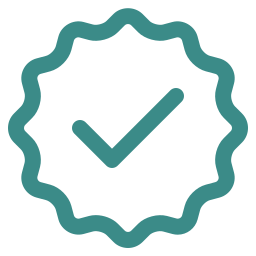You’ve been rocking Pilates for months now and want a little bit more of a challenge.
First came mastering your breathing and proper posture, but now you want to develop a little more strength or even a six-pack of abs.
Maybe you’ve even heard of Pilates reformer machine but have been too shy to join a class or just unsure whether to buy.
Well don’t be, as we will show how a Pilates reformer machine will transform your workouts and your life.
Research shows that Pilates improves muscle recovery, develops core strength, and reduces stress. But on a Pilates reformer machine, you can double the results by adding strength resistance to your workout and toning those muscles.
For this reason, millions of people across the country have made the switch and bought a Pilates reformer machine for home.
At first look at one of these devices, we know that you may be overwhelmed by the sheer number of straps, springs, and moving platforms. The machine practically looks like a cross between a gymnastics vault and a pull-up station at a gym. So where do you even begin?
By the end of this guide, we’re confident that you’ll be confident to go out and try one of these machines and master it in no time!
What is a Pilates Reformer Machine?
A Pilates reformer is a mechanical device that allows you to move on a platform and add weight resistance to traditional Pilates exercises. While these machines may look intimidating initially, they are actually quite intuitive and straightforward to use.
A Pilates reformer machine is basically composed of five key structures:
- Sliding Carriage: The sliding carriage is the part you sit, stand, or kneel on, which moves along the entire machine using wheels. The sliding carriage allows for a full range of body movements and exercises.
- Springs: The springs are what make this machine worth the purchase. Color-coded springs attach to the carriage to provide weight resistance to each exercise. Best of all, you can choose different springs for different exercises to find the right level of resistance.
- Straps: Most machines offer two straps (long and short), which add tension to exercises to improve muscle strength. For example, straps allow you to add resistance to leg circles to improve strength resistance.
- Foot Bar: The foot bar is near the end of the platform where the adjustable springs lie. The foot bar typically adjusts and offers a secure place to rest your hands or feet for exercises.
- Front Platform: The front platform is a solid platform near the springs and foot-bar where you can stand to stabilize one or two legs, depending on the exercise.
Altogether, each mechanism of the Pilates reformer works together to allow you to make a full range of broad lateral movements. The sliding carriage allows you to stretch and target deep muscle groups while springs and straps are employed to offer resistance to each exercise.
Some of us don’t have the flexibility or strength to reach those deep muscles that traditional Pilates targets. Fortunately, this machine helps you stretch and reach those muscles while adding more intensity to your workouts.
As previously stated, the springs make a Pilates reformer so unique. Springs adjust strategically to add more or less strength resistance to each workout to help you develop lean muscle. For example, lighter springs may offer less resistance for exercises like leg circles or footwork, but lighter resistance springs may make core stabilization exercises more challenging.
For this reason, we can’t rave about Pilates reformer machines enough. Pilates reformers are ideal for the workout junkie looking for that next bit of adrenaline or the struggling mom trying to burn that pesky belly fat after pregnancy.
Regardless of your situation, it certainly doesn’t hurt to try out a class with a Pilates reformer machine and see if one is right for your home.
But before you start on your journey, we’ve compiled a list of tips to help you get started and master the amazing Pilates reformer machine.
7 Pilates Reformer Tips for Beginners
1. Find the Right Clothing
Before you step onto your first Pilates reformer machine, you must dress for the occasion. As if Pilates wasn’t great enough, now we get to go shopping. Why not work out in style?
We recommend purchasing tighter and form-fitting clothes that won’t limit your range of movements.
This means skipping the sweatpants and sweatshirts and investing in a tight-fitting shirt or yoga pants.
Similarly, we don’t recommend wearing shoes on your machine, so you don’t slip or limit your range of motion. Of course, most people wear socks but working out barefoot is also good. Again, do what makes you comfortable.
Pilates is about allowing your body to stay relaxed and responsive. So find clothes that help you reach that state.
2. Control Your Breathing
While we know you’ve mastered the art of deep breathing through your workouts, the intensity of reformer Pilates requires considerable focus. And we accomplish better focus through our breathing.
For this reason, we recommend cutting the upbeat music and curating an environment that’s conducive to your focus. You’ll even find that most Pilates Reformer classes don’t blast music like a cycling class and instead create a calming environment for better focus.
The benefits of this approach are a better overall workout. Deep breathing allows you to target core muscles and reduces the influence of your spine for a complete abdominal workout.
You’ll most certainly notice your body unconsciously try to use its spine during workouts, so it’s key to cut out that influence to maintain proper posture.
Think of Pilates as total mind and body alignment. Practicing proper breathing techniques helps you achieve greater focus, which you will use to target those muscle groups and make more strategic movements.
3. Take it Slow
Piggybacking off of this previous point, practicing proper breathing and focus is essential because you reap the most benefits from Pilates through slow, purposeful movements.
As you understand, Pilates is not a cardiovascular or HIIT exercise. While Pilates reformer can help you develop lean muscle, Pilates does not require explosive movements to tear down muscle.
Instead, Pilates reformer machines help stretch and stabilize muscles through slow movement.
When you start core workouts, you’ll notice that slow movements and stabilizing your body weight provide the greatest resistance for those small muscle groups.
So don’t exhaust yourself on your first exercise and take it slow. This way, you’ll be more motivated to come back, and you’ll find out how much resistance you can incorporate in each exercise.
4. Don’t forget to Stretch
We’re all guilty of starting an exercise without remembering to stretch. But you may be asking why do I need to stretch when Pilates stretches my muscles for me?
First, dynamic stretching before exercises helps blood flow and loosens muscles. Secondly, stretching enables you to reach peak performance at maximum resistance during exercises. Finally, stretching helps prevent injury.
Without stretching, you may not reap the benefits you sew out of a Pilates workout, and you could leave your body vulnerable to harm.
So take the time for five minutes of stretching before a reformer Pilates workout, and you’ll definitely feel better about it the next day!
5. Alternate Muscles
Again, we’re all guilty of targeting those muscles that make us look good, like the abs, biceps, etc. But to get the full benefits out of a Pilates workout and improve muscle recovery, it’s important to alternate muscle groups.
When beginning Pilates, be sure to work out each muscle, right to left, for an equal amount of time and with equal pressure. This way, you will get an even, full-body workout and avoid excessive strain on one group of muscles.
Equally as important is to limit your range of motion of specific exercises. This idea goes back to the previous point of taking workouts slowly and relates to targeting specific, small muscle groups. Instead of doing a full-range workout with big movements, use small strategic movements and pair them with different exercises to get a more in-depth workout.
6. Maintain Your Posture
Posture is vital in maintaining circulation through your body and allowing your muscles to enjoy the full resistance of a workout.
We’ve all learned that through our experience with mat Pilates. However, proper posture is even more important in avoiding lower back pain now that we’re adding weight to these exercises.
Simple habits like tucking your chin down during core workouts can help avoid neck strain. Similarly, tucking your ribs during different poses can help avoid ribcage flare-ups. Most importantly, avoid using your back or spine to assist with workouts, as you will do more harm than help your posture.
Your back will be sure to thank you!
7. Stay Patient
Finally, we can’t stress this enough, but be patient. While traditional mat Pilates take months to deliver results, we expect reformer Pilates to deliver them faster. However, results will not be instant, and you shouldn’t be discouraged just because you don’t have a six-pack after the first two workouts.
We need to reiterate that the benefits of Pilates extend beyond just burning belly fat as Pilates reduces stress, helps you achieve better sleep, and fixes your posture.
Pilates reformer machines provide weight resistance to regular Pilates workouts and enable you to develop greater lean muscle.
However, many people are either intimidated or ignorant of how a Pilates reformer machine really works. Fortunately, you can see faster results and up your Pilates game by nailing down the basics and applying traditional workouts to a reformer setting.
Best of all, it doesn’t take rocket science to figure out how to use a Pilates reformer machine. Pilates reformer machines customize specifically to your workout of choice and provide a wide range of exercises for everyone to enjoy.
By following these tips, we’re confident you’ll be prepared for your first Pilates reformer workout and your next obsession.





